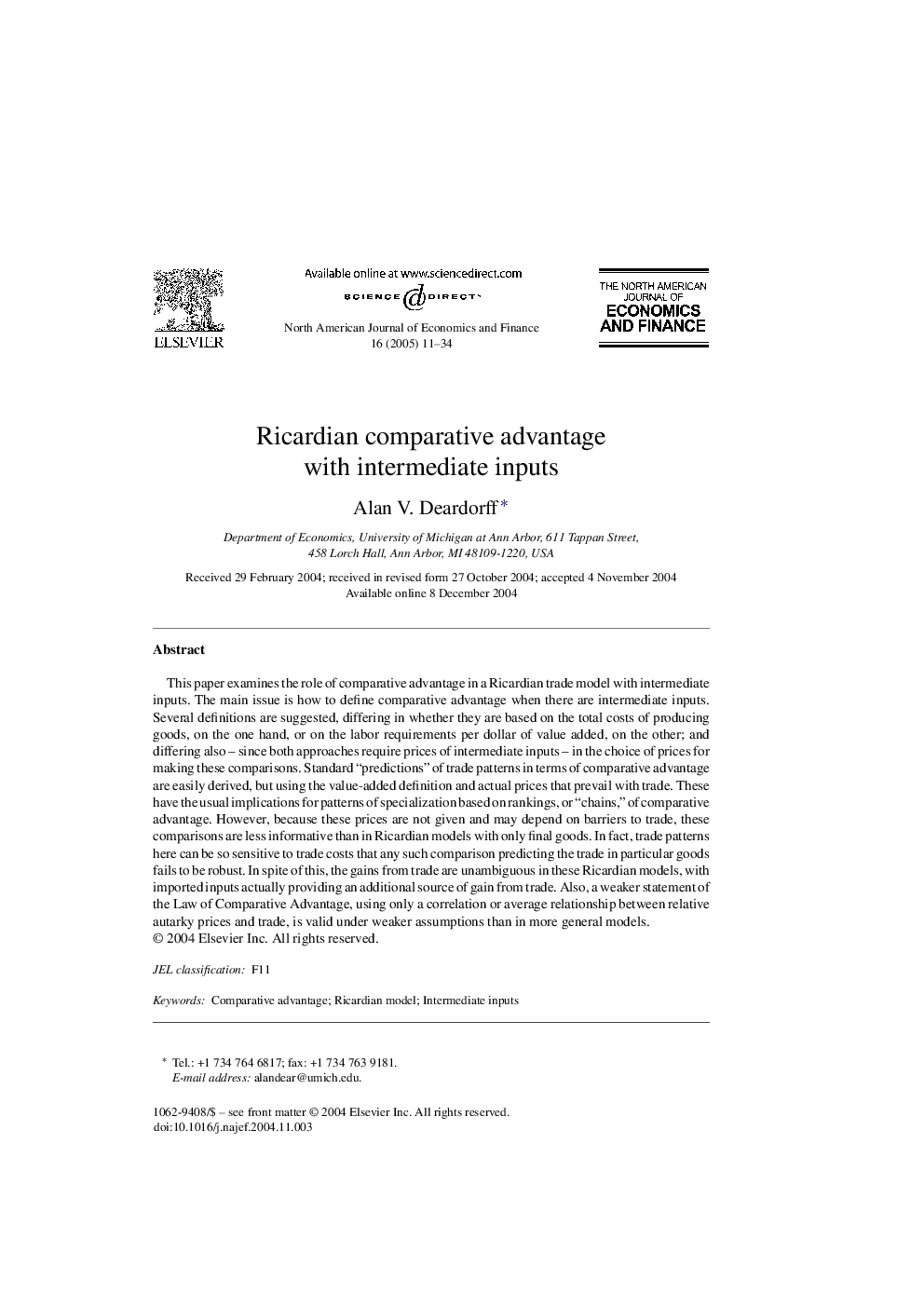| Article ID | Journal | Published Year | Pages | File Type |
|---|---|---|---|---|
| 9727400 | The North American Journal of Economics and Finance | 2005 | 24 Pages |
Abstract
This paper examines the role of comparative advantage in a Ricardian trade model with intermediate inputs. The main issue is how to define comparative advantage when there are intermediate inputs. Several definitions are suggested, differing in whether they are based on the total costs of producing goods, on the one hand, or on the labor requirements per dollar of value added, on the other; and differing also - since both approaches require prices of intermediate inputs - in the choice of prices for making these comparisons. Standard “predictions” of trade patterns in terms of comparative advantage are easily derived, but using the value-added definition and actual prices that prevail with trade. These have the usual implications for patterns of specialization based on rankings, or “chains,” of comparative advantage. However, because these prices are not given and may depend on barriers to trade, these comparisons are less informative than in Ricardian models with only final goods. In fact, trade patterns here can be so sensitive to trade costs that any such comparison predicting the trade in particular goods fails to be robust. In spite of this, the gains from trade are unambiguous in these Ricardian models, with imported inputs actually providing an additional source of gain from trade. Also, a weaker statement of the Law of Comparative Advantage, using only a correlation or average relationship between relative autarky prices and trade, is valid under weaker assumptions than in more general models.
Related Topics
Social Sciences and Humanities
Economics, Econometrics and Finance
Economics and Econometrics
Authors
Alan V. Deardorff,
